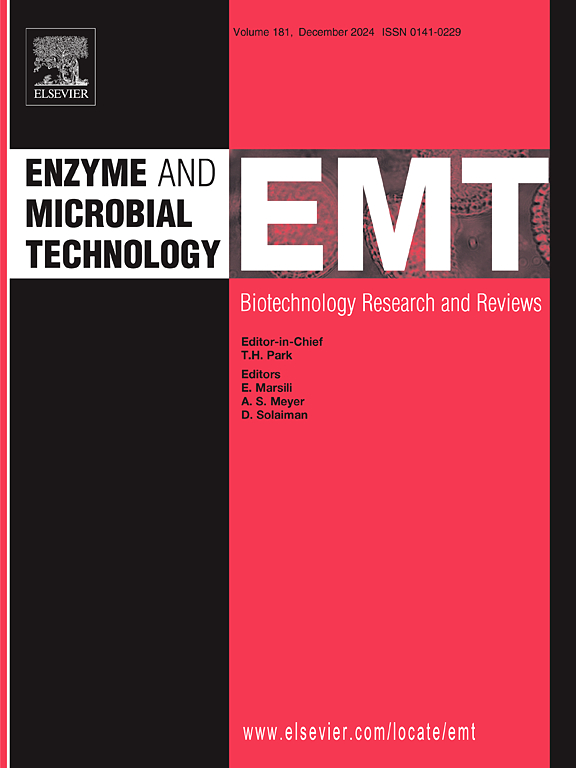Breaking the CREB–CBP alliance: Progress, challenges, and therapeutic promise of small-molecule and peptide disruptors of the pKID–KIX interaction
IF 3.7
3区 生物学
Q2 BIOTECHNOLOGY & APPLIED MICROBIOLOGY
引用次数: 0
Abstract
The kinase-inducible domain (pKID) of the transcription factor CREB engages the KIX domain of the co-activator CBP/p300 to drive signal-dependent gene expression that underpins cell proliferation, metabolism and survival. Aberrant CREB–CBP signaling is now implicated in numerous cancers and metabolic disorders, yet until recently the shallow, dynamic pKID–KIX interface was viewed as chemically intractable. This review integrates two decades of progress that overturns that paradigm. We first dissect the structural and allosteric features of KIX that enable coupled folding-and-binding of pKID and reveal hidden ligandable pockets. We then survey the expanding inhibitor repertoire—from early micromolar naphthols (KG-501) through nanomolar naphthamides (666−15) and orally tractable pro-drugs, to high-affinity stapled and D-peptide mimetics—highlighting the assays, structure–activity relationships and pharmacokinetic optimization that have driven each advance. Biophysical and computational insights, including 19F NMR ligandability maps and millisecond-scale molecular-dynamics trajectories, are shown to guide next-generation design and machine-learning pipelines. Pre-clinical data demonstrate that disrupting CREB–CBP selectively suppresses tumor growth with favorable tolerability, and we outline opportunities for combination therapies, degrader strategies and indication expansion into metabolic and neurocognitive disease. Collectively, these findings position the CREB–CBP interaction as a tractable, multi-modal drug target poised for first-in-human exploration.
打破CREB-CBP联盟:pKID-KIX相互作用的小分子和肽干扰物的进展、挑战和治疗前景
转录因子CREB的激酶诱导结构域(pKID)与共激活因子CBP/p300的KIX结构域结合,驱动信号依赖性基因表达,支持细胞增殖、代谢和存活。异常的CREB-CBP信号现在与许多癌症和代谢紊乱有关,但直到最近,浅的动态pKID-KIX界面被认为是化学上难以处理的。这篇综述整合了20年来推翻这一范式的进展。我们首先剖析了KIX的结构和变构特征,这些特征使pKID能够耦合折叠和结合,并揭示了隐藏的可配体口袋。然后,我们调查了不断扩大的抑制剂品种——从早期的微摩尔萘酚(KG-501)到纳摩尔萘胺(666−15)和口服可处理的前药,再到高亲和力的钉状和d肽模拟物——强调了推动每一项进展的分析、构效关系和药代动力学优化。生物物理和计算洞察力,包括19F核磁共振配位性图和毫秒级分子动力学轨迹,将指导下一代设计和机器学习管道。临床前数据表明,破坏CREB-CBP选择性抑制肿瘤生长,具有良好的耐受性,我们概述了联合治疗、降解策略和适应症扩展到代谢和神经认知疾病的机会。总的来说,这些发现将CREB-CBP相互作用定位为一种易于处理的多模式药物靶点,有望首次在人体中进行探索。
本文章由计算机程序翻译,如有差异,请以英文原文为准。
求助全文
约1分钟内获得全文
求助全文
来源期刊

Enzyme and Microbial Technology
生物-生物工程与应用微生物
CiteScore
7.60
自引率
5.90%
发文量
142
审稿时长
38 days
期刊介绍:
Enzyme and Microbial Technology is an international, peer-reviewed journal publishing original research and reviews, of biotechnological significance and novelty, on basic and applied aspects of the science and technology of processes involving the use of enzymes, micro-organisms, animal cells and plant cells.
We especially encourage submissions on:
Biocatalysis and the use of Directed Evolution in Synthetic Biology and Biotechnology
Biotechnological Production of New Bioactive Molecules, Biomaterials, Biopharmaceuticals, and Biofuels
New Imaging Techniques and Biosensors, especially as applicable to Healthcare and Systems Biology
New Biotechnological Approaches in Genomics, Proteomics and Metabolomics
Metabolic Engineering, Biomolecular Engineering and Nanobiotechnology
Manuscripts which report isolation, purification, immobilization or utilization of organisms or enzymes which are already well-described in the literature are not suitable for publication in EMT, unless their primary purpose is to report significant new findings or approaches which are of broad biotechnological importance. Similarly, manuscripts which report optimization studies on well-established processes are inappropriate. EMT does not accept papers dealing with mathematical modeling unless they report significant, new experimental data.
 求助内容:
求助内容: 应助结果提醒方式:
应助结果提醒方式:


